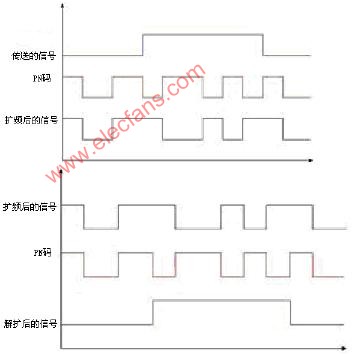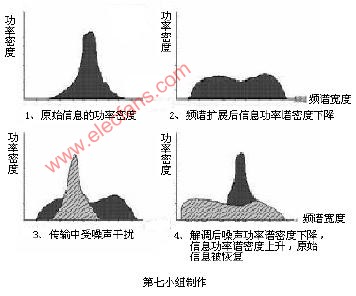Direct Sequence Spread Spectrum (DSSS)
basic concept:
The so-called direct sequence spreading is to directly modulate the information bit stream with a spreading code sequence with a high code rate at the sending end, thereby spreading the spectrum of the signal. Spread, restore the spread spectrum signal to the original information. A direct sequence spread spectrum technique is to use XOR operation to combine the digital information stream with the spreading code bit stream.
For example, at the transmitting end, replace "1" with 11000100110 and replace "0" with 00110010110. This process achieves spreading, and at the receiver, as long as the received sequence is 11000100110, it returns to "1". 00110010110 will return to "0", which is despreading. In this way, the source rate is increased by 11 times, and the processing gain is more than 10dB, which effectively improves the overall noise ratio.
Waveform schematic diagram of direct sequence spread spectrum communication

Power spectral density diagram of direct sequence spread spectrum communication 
Introduction of spread spectrum system after modulation:
At the transmitter, the information to be transmitted is first converted into binary data or symbols. After being M-PSK modulated, it is multiplied with a pseudo-random code (PN code) to form a composite code, which is then sent to the channel to add Gaussian white noise. Generally, in order to improve the working efficiency and transmission power of the transmitter, a balanced modulator is generally used in the spread spectrum system.
At the receiver, the PN code is completely synchronized with the transmitter to despread the received signal, and then the original data information is restored by the demodulator.
12V Adapter,Power Supply Adapter,Laptop Power Ac Adapters,Linear Desktop Power Adapter
Ninghai Yingjiao Electrical Co., Ltd. , https://www.yingjiaoadapter.com
